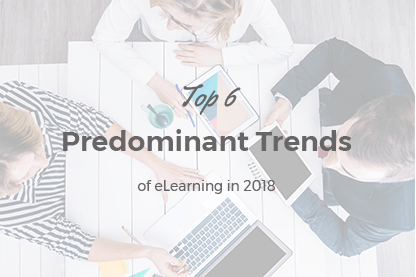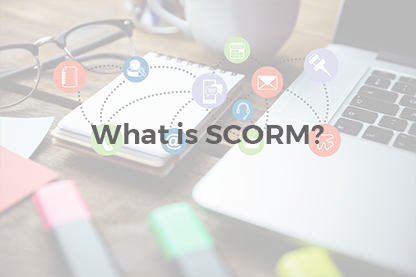With technology development, extensive use of digital materials and changing needs of modern learners a traditional classroom-based approach becomes less and less efficient. To remedy the situation schools and colleges adopt Leaning Management Systems allowing teachers to realize various pedagogical models, deliver personalized learning, engage and connect students. According to the studies, 1/5 of all LMS implementations take place in the educational sector [source].
Let’s explore the ways a Learning Management System can enhance a traditional face-to-face learning environment.
With technology development, extensive use of digital materials and changing needs of modern learners a traditional classroom-based approach becomes less and less efficient. To remedy the situation schools and colleges adopt Leaning Management Systems allowing teachers to realize various pedagogical models, deliver personalized learning, engage and connect students. According to the studies, 1/5 of all LMS implementations take place in the educational sector [source].
Let’s explore the ways a Learning Management System can enhance a traditional face-to-face learning environment.
Different groups of students study independently, without interfering one another
An LMS allows moving a school to the digital format, herewith saving the very structure teachers are used to: a school board, departments, teachers, classes, students. Independent teachers manage multiple classes with separate curriculums, scoring, attendance tracking, assessments, reports, systems of communication and parents’ involvement. The difference lies in wider opportunities, including a chance to teach students worldwide.
A personalized approach to each student
You must admit that it is quite difficult for a teacher to meet the diverse needs of individual students when there are twenty or thirty of them in the classroom. An LMS, in its turn, allows teachers to shift from “one-size-fits-all” model to a student-centered one, with a primary focus on students’ needs and equal opportunities for everyone, independently of a background or abilities. With a system of LMS learning paths (a sequence of steps a student needs to take to pass the course) and a range of content formats available a teacher provides a unique, tailored learning experience, which cannot be achieved in a traditional class.
Increased engagement and students’ collaboration
Have you ever noticed how different the behavior of students with a low self-esteem is when they are in the classroom with peers and online? I am sure you have. A low self-esteem and shyness are obstacles towards an active participation and engagement in the classroom activities, which, in their turn, are easily overcome in the online learning environment, where a student sits in a comfortable chair in front of the monitor and doesn’t fear to express the thoughts. The number of communication tools, offered by a Learning Management System, such as a chat, a forum, social communities, blogs, wikis etc. allows a teacher to engage students and give a voice to less confident ones.
Flexibility, a room for pedagogical experiments and innovations
In comparison with a traditional classroom-based teaching, where a teacher has to follow a prescribed program, teaching online, with the help of an LMS, lets a teacher experiment, applying different learning models and techniques such as blended learning, rapid learning, storytelling, flipped learning, gamification, social learning etc., thereby find the approach working in this or that particular case.
Unlimited tracking data
An LMS grants access to unlimited tracking data such as the time spent completing a specific assignment or test; documents download statistics, the latest course activities, learning paths statistics, completion reports, user grades statistics and much more. With all this data available, a teacher can not only improve students’ performance by finding the gaps in their knowledge but find shortcomings in the teaching process to maximize the teaching effectiveness.
Parents’ involvement
An LMS has a set of predefined roles, including a role of a parent who can log in to the system to check the child’s attendance, track the grades, and communicate with a teacher or other parents. It helps to build better parent-teacher-student relationships, achieve more effective communication and parents’ involvement with the students’ learning.
Unlimited Customization Opportunities
What is great about installed LMS solutions, they can be widely customized and integrated with third-party components to reach the particular needs of each school.
Let me bring an example of Ticken, Dutch touch-typing school that started as a small Internet-based project and is now introduced to almost every school in Holland to teach kids touch-typing. The founder, Martin Beijer, didn’t just install an LMS like everyone else; he realized a unique teaching approach with the help of customized LMS version. The team developed for Ticken a number of unique features, including an online keyboard, a system of counting typing mistakes and activity reports.
It is quite difficult to teach the height being as everyone else, however with a unique idea realization chances to change the way kids learn are pretty high. Here, at JoomLMS, we understand that schools’ budgets are limited and a single teacher doesn’t have the power to make a school board implement a Learning Management System, but we are always ready to support educational institutions and non-profit projects.
Please contact us for more information.
What to read next?
Use JoomLMS for Teaching Online
How to Make Blended Learning Work in a Classroom - Interview with Catlin Tucker
10 Ted Talks That Will Help You to Make ELearning Meet Modern Learners’ Needs










